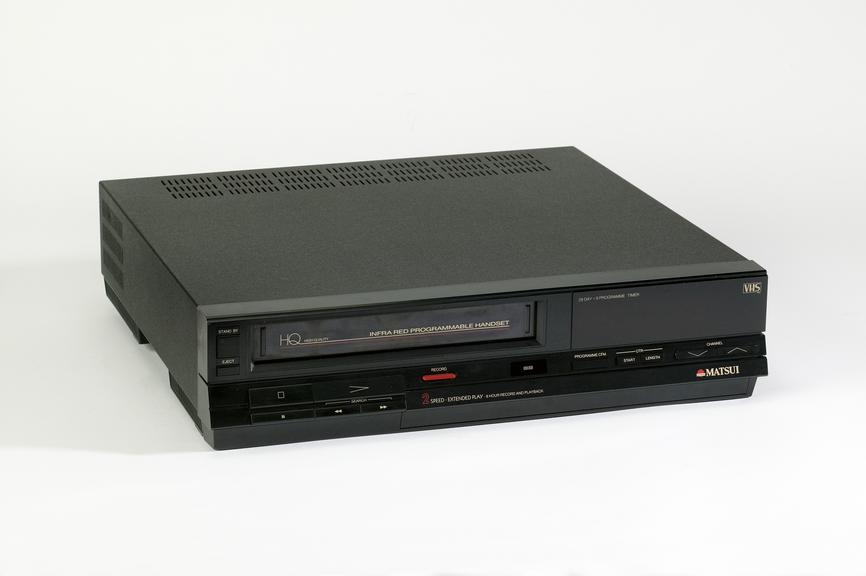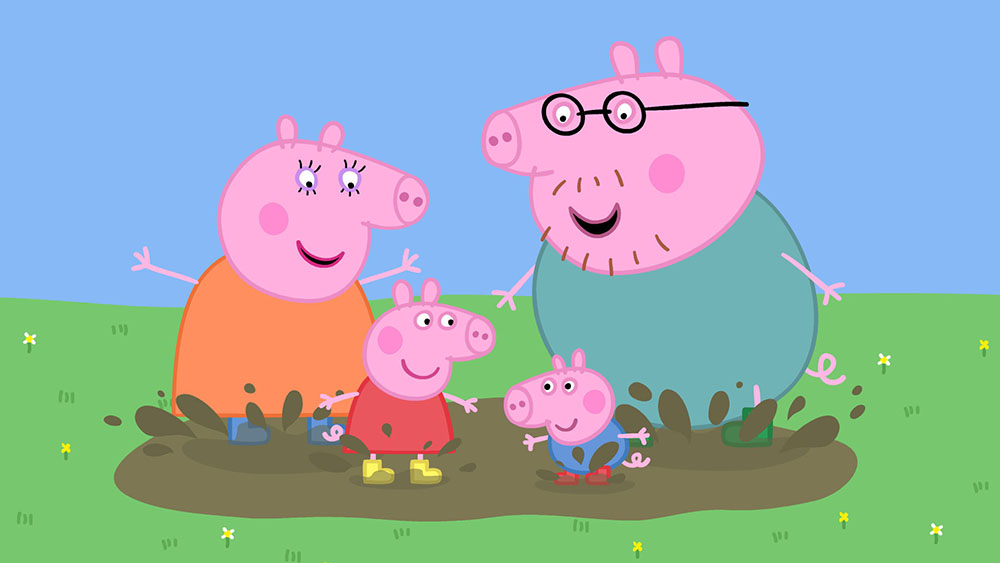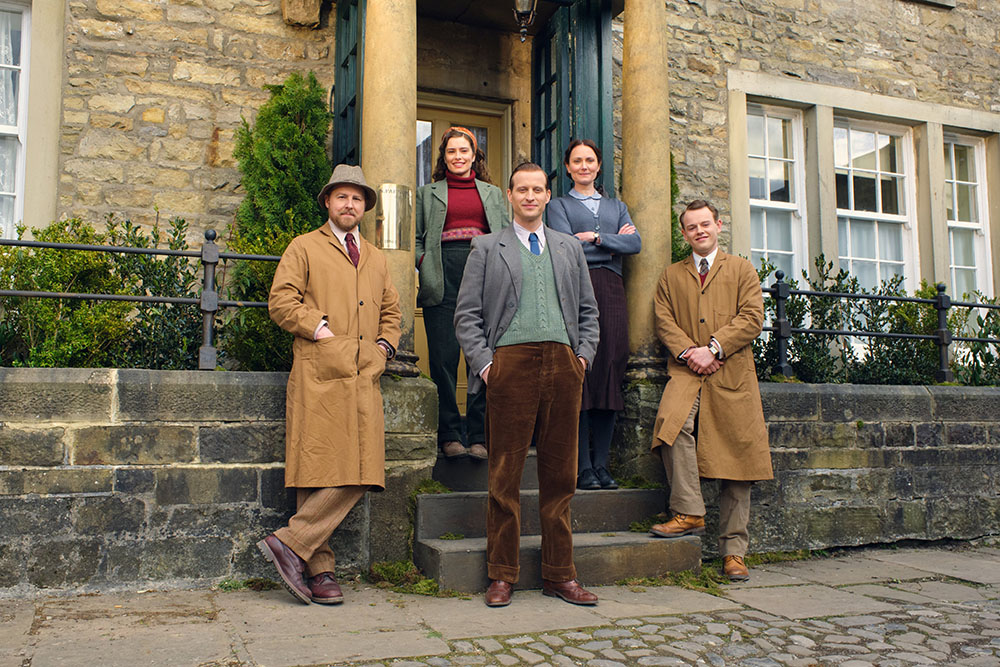Channel 5 launched on 30 March 1997. The channel was the last analogue terrestrial channel in the UK. Before the explosion of digital channels, viewers were restricted to the four terrestrial channels in the UK, and S4C in Wales. Extra channels could be paid for by cable and satellite subscription but, unlike these commercial channels, Channel 5 would be another public service broadcaster designed to create diverse programming that appealed to a broad range of the British public.
To get to viewers’ screens, the new channel needed to not just carve out a new identity, but also overcome major technical hurdles.
Clearing the airwaves for Channel 5
In this pre-digital age, terrestrial channels were broadcast on UHF (ultra high frequency) radio frequencies, with 48 channels available between 470 to 854 megahertz. The frequencies were used by other technologies than just television. The channels allocated to Channel 5, channel 35 and 37, were already in use—by radio microphones in theatre and airport radar, respectively.
The existing channels’ uses would be shifted, but this created a problem: domestic video recorders all around the country had been tuned to channel 37 at low frequency to connect to television receivers. Broadcasting Channel 5 on the same frequency would disrupt the television picture.

The burden of retuning everyone’s video player was passed to the operators of Channel 5 by Clause 28 in the Broadcasting Bill that set up the channel. Through a mammoth effort, engineers were sent to 10 million homes around the country to guarantee 90% of those affected were corrected before broadcasting could start.
This was the largest house-to-house operation since the arrival of natural gas. Ultimately, it was a success, with the original deadline only narrowly missed, moving the launch from 1 January to 30 March 1997.
Launching Channel 5

Channel 5 was launched by the Spice Girls at the height of their fame, capturing the exuberant spirit of the late 1990s. The five-piece group recorded ‘1, 2, 3, 4, 5’, a reinterpretation of Manfred Mann’s ‘5, 4, 3, 2, 1’. The opening video saw the group in sets build around the new brand. Bright 90s colours were reflected in the channel identity of rainbow stripes. The circular 5 logo would be the only DOG (digital on-screen graphic) on terrestrial UK television, permanently visible in the top left corner of the screen.
Tim Vine and Julia Bradbury introduced the channel’s programming. As a new public broadcaster, it featured variations on traditional television schedules—news, children’s programmes, documentaries and drama.
Immediately Channel 5 marked itself out as willing to experiment with known formats. The Channel 5 news service was delivered by ITN who supplied ITV and Channel 4. Presenter Kirsty Young surprised viewers by sitting informally on her desk, rather than rigidly behind it. And before the arrival of 24-hour news services, Channel 5 news provided hourly updates throughout the day.
Soaps at home and away
Channel 5 quickly became known for its American imports, it would later become home to high profile crime shows CSI, NCIS and Law and Order, but one of its earliest purchases was the glossy American soap Sunset Beach.
As a counterpoint, Channel 5’s homegrown soap Family Affairs followed the middle-class Hart family in their outer London suburb of Charnham. The low-stakes drama couldn’t match existing heavyweights Coronation Street and EastEnders, but an attempt to revitalise the show in the year after its launch gave us one of the greatest and most distinctively ‘soap’ moments on British television.
The notorious Brian Park was brought in as the show’s producer. The ‘axeman’ had gained a reputation from his merciless overhaul of Coronation Street, which had seen the removal of several long-running characters. Family Affairs went a step beyond. The entire Hart family—husband and wife Chris and Annie, their daughters Holly and Melanie, grandfather Angus and infant Samuel—were unceremoniously killed off in a boat explosion.
‘Nothing is going to destroy this family. We’re survivors’—Annie Hart, Family Affairs, shortly before being blown up
The now ironically titled show immediately shifted setting to Charnham Common in West London. Despite featuring a pre-big-time Idris Elba, the show failed to establish itself and ended in 2004. However, Channel 5 has found success in the soaps stakes as the home for Australian mega-soaps Home and Away and Neighbours.
International superstar
The biggest success of Channel 5 came from another core area of British public broadcasting—children’s television. The milkshake! strand airs in the mornings hosting multiple shows aimed at younger viewers. On 31 May 2004, Channel 5 broadcast the first episode of Peppa Pig.

The show, aimed at a preschool audience, has been an international success, broadcast in more than 180 countries. It has spawned a franchise that encompasses merchandising and even the eponymous theme park Peppa Pig World, frequented by children and politicians alike.
Peppa is a four-year-old anthropomorphic pig who younger audiences can relate to, and the show embraces a child’s perspective. Her voice has been provided by a series of children whose mistakes and phrasing are incorporated into the show. The appealing child’s drawing style is actually accomplished on CelAction 2D software and the influence of the flat storybook imagery can be seen in subsequent children’s shows and the successful branding and licensing of the character.
Taking on television formats
A very different onscreen pig defines another era within Channel 5’s formative years. The rise of reality TV in the early 21st century fuelled celebrity culture and the birth of the personality who is ‘famous for being famous’. The most iconic show of the format—Big Brother—moved to Channel 5 in 2011.
Numerous shows gave exposure to fame-hungry celebrities, putting them in ever more outlandish scenarios. The Farm arrived on Channel 5 in 2004 and caused controversy over a scene that saw Rebecca Loos pleasure a pig to collect semen as part of the show’s scenario of celebrities living on a working farm. Although it may not be the most highbrow content, the incident does help demonstrate Channel 5’s willingness to fully explore contemporary programming.
As it turns 25, Channel 5 has proved itself as genuinely engaged with its remit as a commercial public broadcaster to appeal to general audiences. Just as it was prepared to update viewers’ equipment and ruthlessly revamp its soap, Channel 5 has taken on traditional television formats with an unsentimental willingness to re-examine and change direction.
In the digital era, the station has expanded to include a streaming catch-up service and the additional channels 5Action, 5Select, 5Star and 5USA.

All Creatures Great and Small is one of the latest successes from Channel 5. The period drama, based on the novels of James Herriot, is a more wholesome animal show. The high-end production takes direct aim at a format that is so closely associated with BBC and ITV. Perfect comfort viewing for the lockdowns of its 2020 premiere year, the show has been well received by critics and audiences. It demonstrates that, despite its youth, Channel 5 fully understands, embraces and explores its role in the British public broadcasting landscape.
I’m trying to find out where and if you still had a copy of filming in Llandough children’s hospital it was about the wellness of children who have Asthma and how the nurses get the children chilled before putting a needle in their Arm. It was s4c it was reported on my daughter modelled and was used on front page of Documentary.
In central southern England the C5 analogue signal wasn’t sent from the usual tower at Rowridge on the IOW for fear of interference to French viewers so instead a sheltered mast atop the 202m Fawley power station tower was used – which ironically defied reception anywhere apart from those living within a rough bearing having Ariels lined up to Fawley & Rowridge – Basically just those living in greater Southampton & Portsmouth which was indeed a huge chunk of the south Hampshire metropolitan population but the small matter of another 400,000 plus living in the Bournemouth/ Poole metropolitan area also reliant on the Rowridge iow mast whom were stuffed without alternatives !